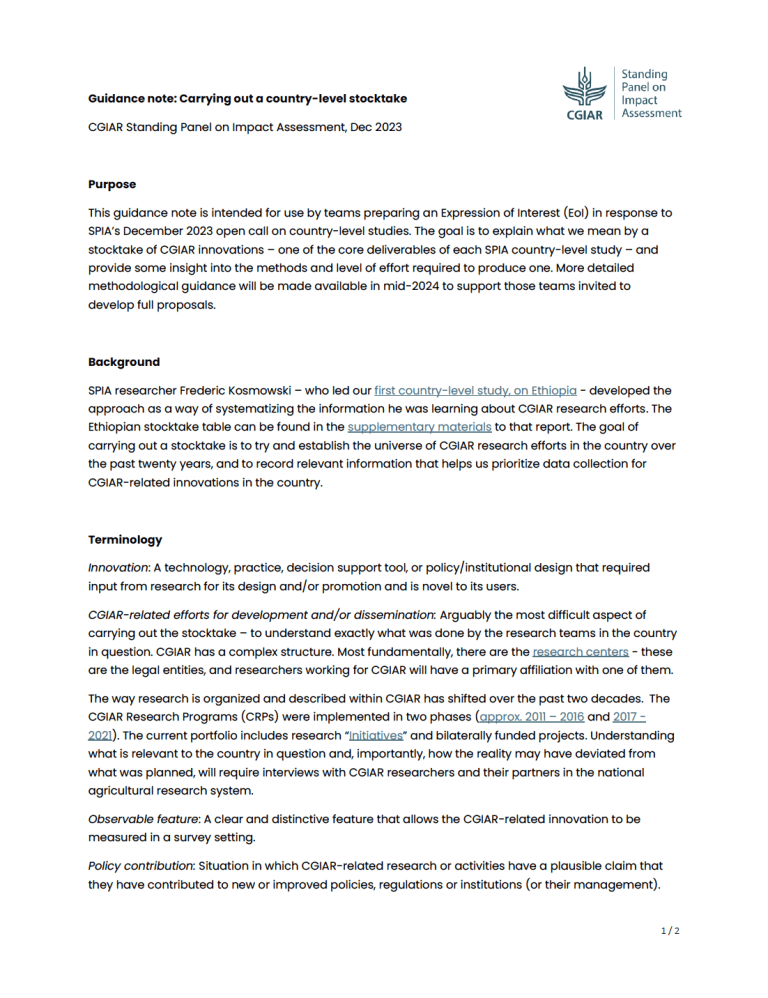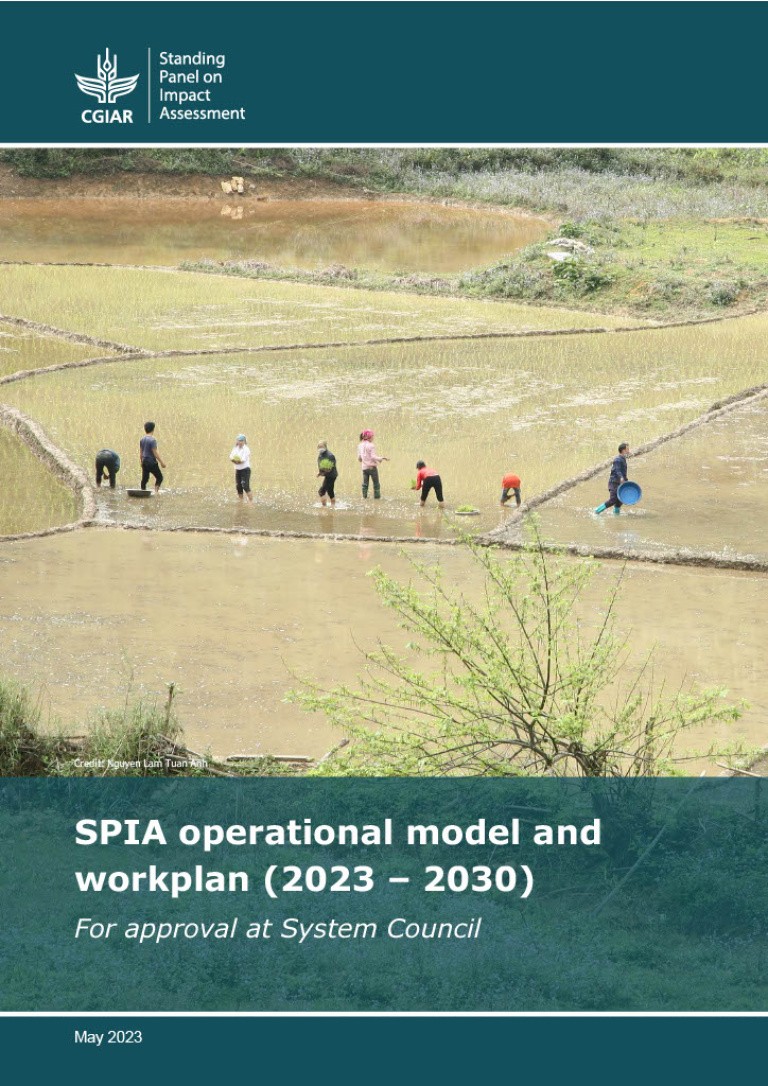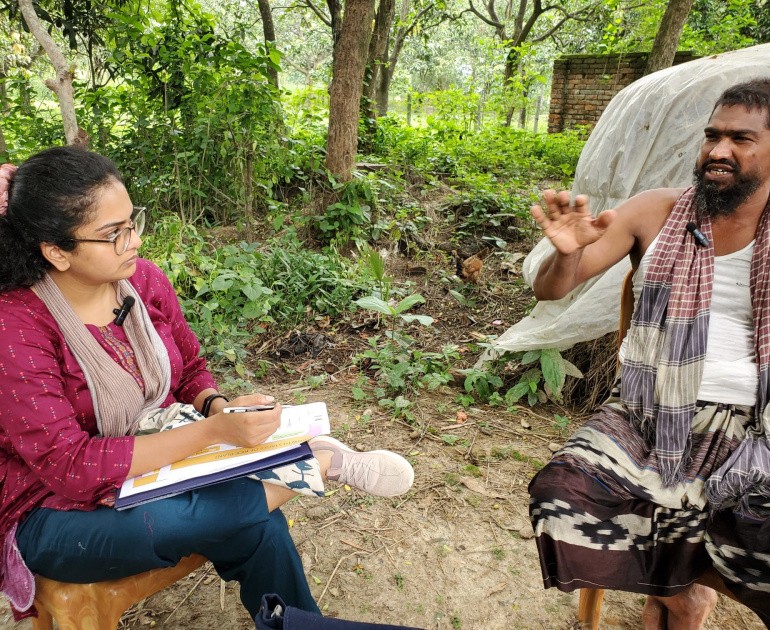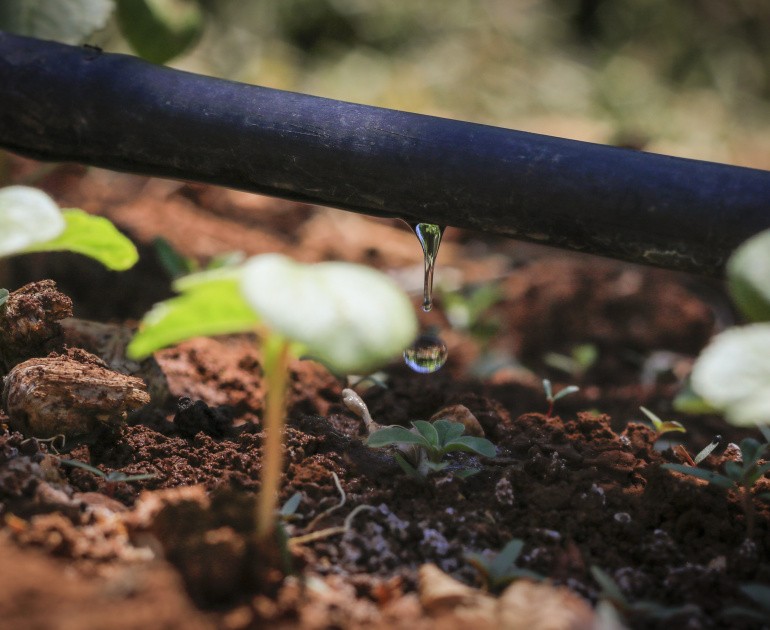Abstract
Remote sensing is developing at a rapid pace, with satellite-based Earth observation (EO) data being made available freely, openly, and at higher spatial, temporal, and spectral resolutions than ever before. This provides new opportunities for EO data to complement traditional survey data and improve the rigor and scope of impact evaluations. This document provides methodological guidance for the use of EO data in measuring the impacts of innovations and interventions on outcomes related to agriculture, natural resources, livestock, and the environment. Though the particular aim is to support incorporation of EO data into evaluation of One CGIAR activities, these guidelines are also relevant for a broad audience of researchers and practitioners from a variety of backgrounds interested in learning about the potential for using remote sensing to conduct impact evaluation.
We showcase 11 case studies that use EO data for impact evaluation. These case studies— representing primarily a set of recent and ongoing projects sponsored by the CGIAR—highlight the range of use cases for EO data as well as several innovative methodological approaches to their analysis. Our discussion of these case studies draws from interviews with members of the implementing research teams. The lessons these researchers learned from their experiences demonstrate how the challenges of using EO data for impact evaluation can be identified and addressed in a variety of real-world research contexts.
We provide strategic insights arising from this portfolio of case studies to help identify in which context remote sensing data can be relevant and appropriate for impact evaluation. We reflect on the skill set, background, and experience that can make up a successful research team that use EO for impact evaluation.
The core of these guidelines centers on introducing a set of good practices for the appropriate use of EO data in impact evaluation. We highlight key topics that must be considered by research teams seeking to use EO data, including image availability, image pre-processing, reference data collection, and validation. In addition, we discuss how issues related to scale, spatial correlation, and nonclassical measurement error can arise when combining EO and other types of spatial data. We provide insights on the transfer of existing geospatial approaches to other contexts.
Echoing the new global impetus for monitoring and measuring progress toward the attainment of the Sustainable Development Goals (SDGs) using EO, we assess and describe how the sustainable development targets identified by One CGIAR initiative proposals can be related to EO-based indicators. For each target, we identify relevant EO-based variables, the recent literature demonstrating their utility, and resources for accessing satellite-derived data sets or products.
We close with a discussion of the need for a systematic change in data collection to fully leverage the potential of EO data for measuring impacts of activities within One CGIAR.
Citation
Pelletier, J., Maue, C., Karasalo, M., Jack, K., Barros, J. (2023). Remote sensing for impact evaluation of agriculture and natural resource management research: Guidelines for use in One CGIAR. Rome: Standing Panel on Impact Assessment (SPIA).
Author(s)
Pelletier, J., Maue, C., Karasalo, M., Jack, K., Barros, J.
Publisher
Standing Panel on Impact Assessment (SPIA)





